Executive Free UPSC Notes Download
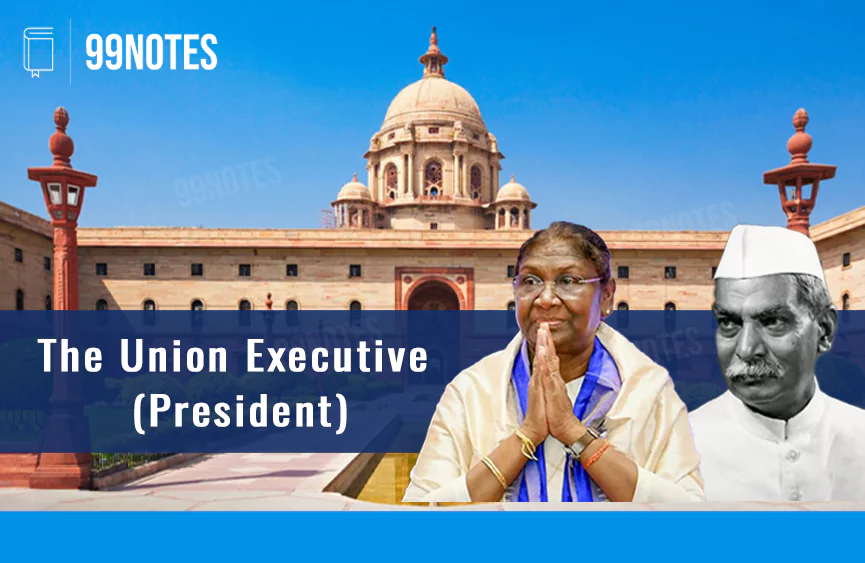
1. President
The Parliamentary system of government is characterised by the presence of dual executives. The Union executive consists of the President, the Prime Minister, the Council of Ministers and the attorney general of India. The executive power of the government of India is vested in the President of India, who is the head of the Indian state

2. The Vice-President
Article 63 of the Indian Constitution provides that there shall be a Vice-President of India. The Vice-President of India is the second highest Constitutional Post after the President. The position of the Indian Vice-President is modelled on the American Vice-President as s/he performs the dual role of Vice-President and the ex-officio Chairperson of the Rajya Sabha.
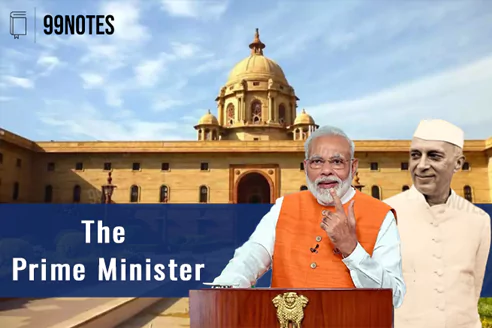
3. The Prime Minister
Article 74 of the Constitution provides that “there shall be a Council of Ministers with the Prime Minister at the head to aid and advise the President who shall, in the exercise of his functions, act in accordance with such advice”. Thus, the real executive power vests in the Union Council of Ministers (CoM), which is headed by the Prime Minister.
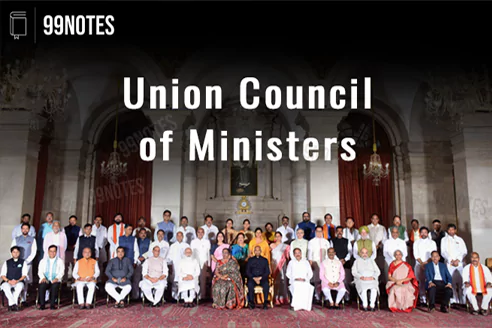
4. Union Council of Ministers
In a Parliamentary System, the Council of Ministers (CoM) headed by the Prime Minister wields the real executive authority. Articles 74 and 75 of the Constitution deal with the power and function of the Council of Ministers.
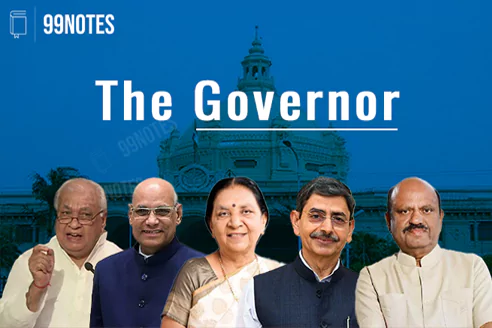
5. The Governor
Article 153 of the Indian Constitution states that “there shall be a Governor for each state”. The Constitution of India establishes a Parliamentary form of Government at both central and state levels. Just as the President is the constitutional head of the state, the Governor is the constitutional head of a state (federal units), who is aided by a council of ministers headed by a CM.
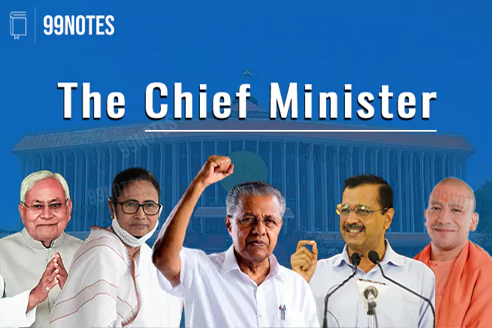
6. The Chief Minister
Article 163 of the Indian Constitution states, “There shall be a Council of Ministers with the Chief Minister (CM) at the head to aid and advise the Governor of the state in the exercise of his functions”. In the parliamentary form of government, the Chief Minister is the real executive authority in states. While the Governor is the head of the state (federal unit), the Chief Minister is the head of the government.

7. State Council of Ministers
In a parliamentary form of government, the Council of Ministers, headed by the Chief Minister, wields the real executive power in the political and administrative system of the state (federal unit). The Council of Ministers in the states function in a similar way as at the central level. Article 163 of the Constitution deals with the constitution of the Council of Ministers to aid and advise the Governor.
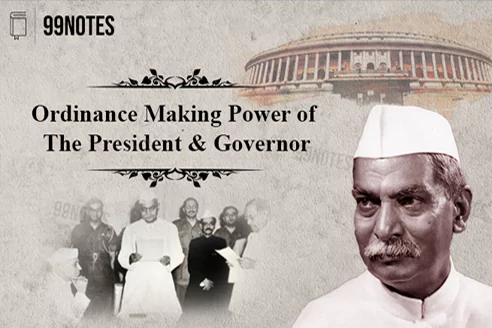
8. Ordinance Making Power of the President and Governor
The Constitution of India under Articles 123 and 213 provides the President and the Governor, respectively, powers to promulgate ordinances but only when ‘immediate action’ is necessary and the Parliament or state legislature is not in session. Ordinances have the same force and effect as an act of legislature.
More About Executive
The Executive
The executive is the organ of the government responsible for implementing the law and everyday governance. In a modern state, the sovereign powers are separated into executive, Legislature and Judiciary for two primary reasons:
- To avoid concentration of powers into few hands.
- For better management of workload.
This separation of powers can occur in two forms:
- ThePresidential system involves a rigid separation of power, where the office of the executive is independent of the Legislature with respect to the term of office.
- This can be seen in countries like the USA, Russia, Brazil, Mexico and Sri Lanka.
- This is based on the Principle of leadership.
- TheParliamentary system involves a fusion of the Executive and Legislature, and the executive is responsible to the Legislature for its acts and policies.
- It is also known as the WestminsterModel (Location of the British Parliament), as it originated in Britain and is prevalent in countries like Britain, Canada, and Japan.
- It is based on the Principle of Collective Leadership.
Executive in India
India follows a Parliamentary system. In India, the President is the nominal head, and the Prime Minister, who is the real head, is responsible to the Legislature.
In the Indian Union, the executive powers are divided into three tiers:
- The Union Executive consists of the President, the Prime Minister, the Council of Ministers, the attorney general of India, and all the officers of the Union Government.
- The State Executive consists of the Governor, the Chief Minister, the state Council of Ministers, the advocate general of the State, and all the officers of the Union Government.
- Local Bodies include the Gram Panchayats, Municipalities, and other Panchayati raj Institutions.
This becomes clear from the diagram below, showing the distribution of powers in India:
Political and Permanent Executive
It is essential to understand the term executive includes all the officers employed by the government, either elected or unelected. Thus, the executive in the country can further be divided into the following offices:
- The Political Executive or the elected executive.
- It derives its authority from the people. The Political Executive wields the real power in India because India is a republican country. This executive (the President or the PM) is democratically elected.
- In India, the President is the Nominal head of State, who exercises their power through the council of ministers headed by the PM, who is the real head of the State.
- It can also be known as the temporary executive, as it changes every few years. Both the President and the government are re-elected every five years. Further, the PM/CM and the council of ministers are obliged to resign if they lose confidence in the house.
- The permanent executive is the selected executive and largely remains unchanged regardless of the government. It derives its authority due to its technical expertise and administrative position.
Civil servants can be regarded as permanent executives. In India, it can be broadly classified into three categories:
- Central services: Officers who work solely for the Centre, solely. For example, Foreign services, Revenue services, etc.
- All India Services: Appointed by the Centre, work under state supervision (i.e. State can’t take disciplinary action). For example, the IAS and the IPS.
- State services: The officers who work solely for the State. For example, Sales tax officers, etc.
Relation between the Political and the Permanent executive:
- The political executive wields the real power in India and is, therefore, known as the government. The Prime minister or the Chief minister (in the states) heads this government.
- Flow of Accountability: The Permanent executive is responsible to the Elected Government, and the elected government is accountable to members of the Legislature, who in turn are answerable to the People.
- The permanent executive is a technical expert and is given the actual job of formulating and executing the Policy, whereas the political executive gives the policy direction. It is the political executive on whose direction all the permanent executives work.
- The Political executive has the power to appoint and transfer the Permanent executive, as it is the permanent executive who represents the will of the people. But this power cannot be used arbitrarily. Independent agencies like UPSC, SPSCs, and the Judiciary ensure that the selection and transfer of civil servants happens fairly and objectively.
- The Political executive in India is also a part of the Legislature and can help in the formulation of better law But it is the Permanent executive on whose shoulders the responsibility of its implementation falls.
Thus, the elected government and the unelected officers are together responsible for the formulation of the Policy and its implementation. Together, they ensure good governance in the country and that the government runs according to the wishes of the people.
In summary, the executive is an important organ of the government of India and is responsible for the administration of the government and the implementation of laws and policies. It consists of the President, the Vice President, and the Council of Ministers, headed by the Prime Minister. The UPSC CSE tests candidates on their knowledge of the executive and its powers and functions, and it is therefore important for candidates to have a good understanding of these aspects.
Here are some steps you can follow to prepare for the executive topic for the UPSC Civil Services Exam (CSE):
- Familiarize yourself with the structure of the executive: You should have a good understanding of the different organs of the executive, such as the President, the Vice President, and the Council of Ministers, and how they are organized.
- Understand the powers and functions of the President: The President of India is the head of state and has certain important powers and functions, such as the power to appoint the Prime Minister and other ministers, and to summon and prorogue the sessions of the Parliament. It is important to understand these powers and how they are exercised.
- Understand the powers and functions of the Vice President: The Vice President of India is the ex-officio Chairman of the Rajya Sabha and acts as the President in the event of the President’s death, resignation, or removal. It is important to understand the powers and functions of the Vice President and how they are exercised.
- Learn about the Council of Ministers: The Council of Ministers, headed by the Prime Minister, is responsible for the administration of the government and is accountable to the Parliament. It is important to understand the structure and function of the Council of Ministers and the role of the Prime Minister in leading it.
- Understand the role of the executive in the administration of the government: The executive is responsible for the administration of the government and the implementation of laws and policies. It is important to understand the role of the executive in these areas and how it is accountable to the Parliament.
- Practice answering questions: To prepare for the exam, it is helpful to practice answering questions on the executive. You can find sample questions on the UPSC website or in practice books, and you can also ask your friends or teachers to give you questions to practice with.
- Seek help if needed: If you are having difficulty understanding any aspect of the executive, don’t hesitate to seek help from your teachers or mentors. It is important to have a thorough understanding of the executive to do well in the UPSC CSE.

